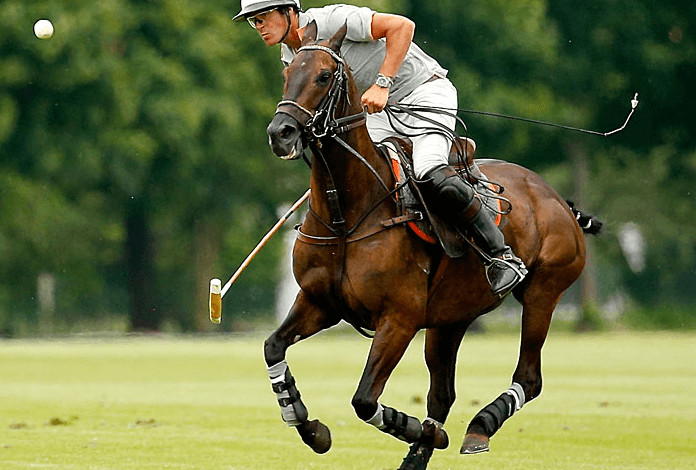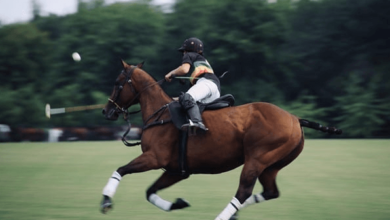What are the rules of polo regarding mallet usage and gameplay?

Polo, often referred to as “The Sport of Kings,” is a captivating game that combines speed, strategy, and skill in a unique way. At the heart of polo are its rigorous rules, especially those concerning mallet usage and gameplay. These guidelines ensure the safety of both the players and their equine partners, while maintaining the sport’s integrity and competitive spirit.
Introduction to Polo
The game of polo is a dynamic team sport played on horseback, where the primary objective is to score goals by hitting a small ball into the opposing team’s goal using a long-handled mallet. Originating over two thousand years ago, polo has evolved from a training game for cavalry units to a global sport enjoyed by many.
The Origins of Polo
Polo’s roots can be traced back to ancient Persia, where it was initially a training exercise for elite cavalry units. Over the centuries, it spread across Asia and was eventually embraced by British tea planters in India, from where it spread to the Western world.
How Polo is Played Today
Modern polo is a fast-paced sport that requires both the player and their horse to display immense levels of teamwork, agility, and precision. Matches are played on a large grass field, with four players on each team.
Essential Equipment in Polo
The polo mallet is an extension of the player, serving as the primary tool for interacting with the ball. It consists of a cane shaft with a hard wooden head, designed for hitting the ball with precision and power.
Polo Horses: Breeds and Training
Polo horses, or “polo ponies,” are highly trained athletes. While not a specific breed, these horses are often thoroughbreds or thoroughbred crosses, prized for their speed, stamina, and agility.
The Rules of Polo: An Overview
Polo is governed by a set of international rules that standardize the game’s play, ensuring fairness and safety. These rules cover aspects from game duration to player conduct.
The Objective of the Game
The primary aim in polo is to score more goals than the opposing team by driving a small, hard ball into the opponent’s goal using a mallet.
Team Composition and Player Positions
A polo team consists of four players, each with specific roles and positions that require different skills and strategies.
Mallet Usage in Polo
Handling the polo mallet correctly is crucial for effective play. Players must master various grips and swing types to strike the ball accurately and powerfully.
Proper Holding Techniques
The grip on the mallet should be firm yet flexible, allowing for a range of movements required to hit the ball from different angles and heights.
Mallet Swing Types and Strategies
There are several swing types in polo, including the offside forehand and the nearside backhand, each used depending on the player’s position relative to the ball.
Gameplay and Conduct
Polo matches begin with a throw-in from the umpire, and play is continuous, with players aiming to outmaneuver their opponents while adhering to the sport’s rules and etiquette.
Starting the Game: The Throw-In
Games and subsequent chukkas (periods) start with a throw-in, where the umpire tosses the ball between the two teams lined up at the center of the field.
Fouls and Penalties
Fouls are a significant part of polo, with penalties awarded for actions that endanger players, horses, or violate the right-of-way rules.
Safety Measures and Equipment
Safety gear for players includes helmets, boots, and knee guards, while horses wear protective bandages and boots to prevent injuries.
Protective Gear for Players
Wearing the appropriate safety equipment is mandatory for all players to minimize the risk of injury during gameplay.
Advancing Skills in Polo
To excel in polo, players must continuously hone their riding skills, mallet handling, and understanding of game strategies.
Training and Conditioning Tips for Players
Physical fitness, along with regular practice sessions, is essential for improving one’s polo skills and overall performance on the field.
The Cultural Impact of Polo
Polo has a rich history and has influenced various aspects of culture and society, from fashion to art, showcasing its enduring appeal.
Polo’s Influence on Society
Beyond the field, polo has left a mark on society, symbolizing a blend of tradition, luxury, and sportsmanship.
Polo as a Spectator Sport
Polo attracts a diverse audience, drawn to its thrilling gameplay, social atmosphere, and the elegance associated with the sport.
FAQs on Polo Mallet Usage and Gameplay
- How long is a typical polo mallet?
- Polo mallets vary in length, typically ranging from 49 to 54 inches, depending on the height of the horse and the player’s preference.
- Can left-handed players use their left hand in polo?
- No, polo rules require players to hold the mallet in their right hand for safety reasons.
- How many chukkas are in a polo match?
- A standard outdoor polo match consists of four to six chukkas, each lasting 7 minutes.
- What is the right of way in polo?
- The right of way is a rule that establishes which player has the priority to hit the ball, based on their position and trajectory, to prevent collisions.
- How are polo horses trained?
- Polo horses undergo extensive training to develop agility, speed, and responsiveness to their rider’s commands.
- Why are polo balls hit to the right?
- Hitting the ball to the right, or the offside, is a traditional rule designed to minimize the risk of accidents by standardizing gameplay.
Conclusion: The Art and Etiquette of Polo
Polo is more than a sport; it’s a testament to the bond between horse and rider, a display of skill, strategy, and speed. Understanding the rules of polo, especially regarding mallet usage and gameplay, not only enhances the safety and fairness of the game but also enriches the appreciation for this storied sport. As players and enthusiasts alike delve into the complexities and traditions of polo, they contribute to the legacy of a game that continues to captivate and challenge generations.

